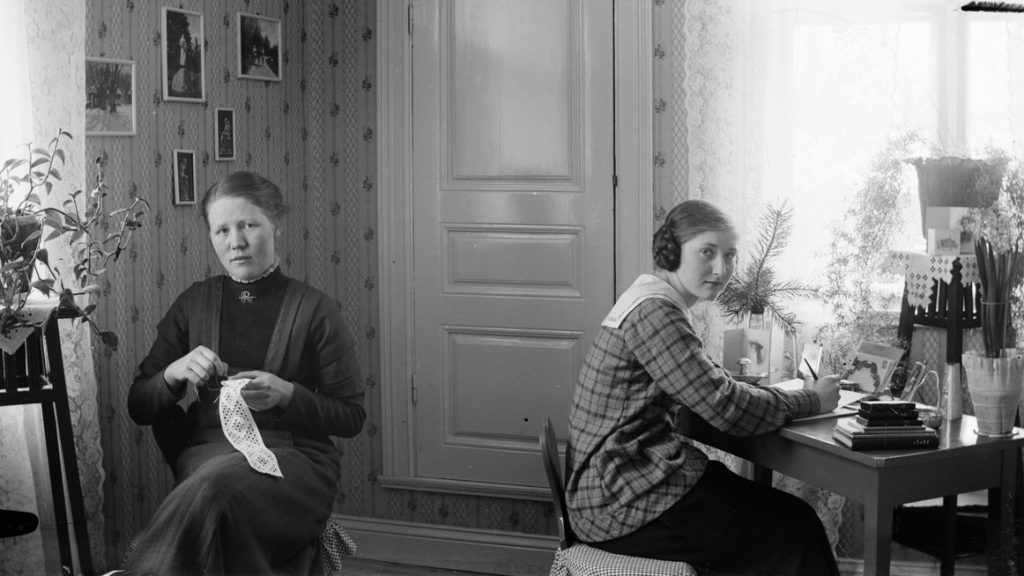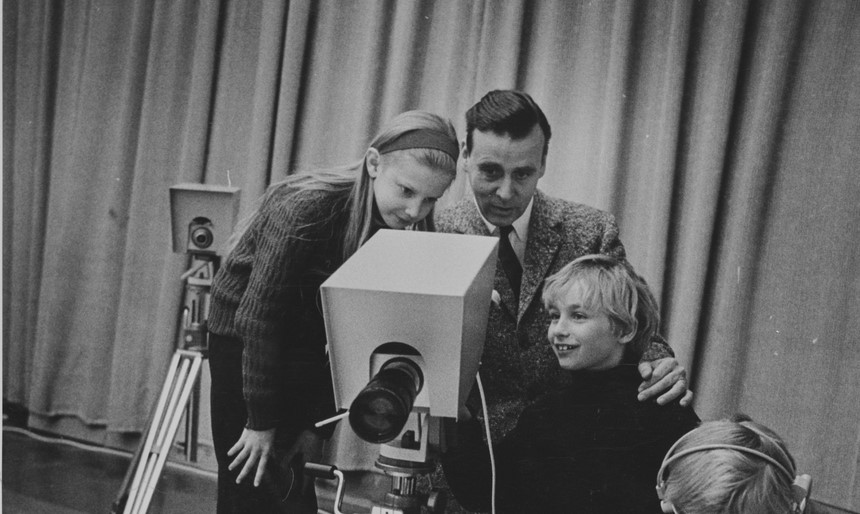
User-generated content
How can we consider cultural heritage collections to be open when institutions are the only ones defining and controlling them? Enabling access to shape and diversify collections to other communities and accepting their knowledge as equally important can be another way to open up GLAM collections. One way to increase diversity and openness in cultural heritage collections is user-generated content. What is it and what are the chances and challenges for GLAMs?
User-generated content, or UGC, is considered as media or contributions that are created and published by users of a web service – instead of the editors or companies that run the platforms. It can be perceived as part of the so-called Web 2.0 where people are encouraged to not only consume content but also actively produce and publish themselves.
This session included different approaches to UGC: Elisabeth Boogh (Stockholm County Museum) presented the research project “Collecting Social Photography” that seeks to develop new work practices for collecting and disseminating everyday pictures in GLAM institutions. Adrian Murphy (Europeana Foundation) introduced us to their UGC campaigns and collection activities.
Researching modern photographic practices
The three-year Nordic research project Collecting Social Photography is focusing on how museums and archives can work with photography collections in the age of social media. One of the project partners is Stockholm County Museum: Elisabeth Boogh presented the work and case studies they have conducted around user-generated content (presentation). At the museum, they have a long record of collecting social photography via Samtidsbild, an application that enables people to share their images with the museum. More than 400 users have shared more than 4.000 images since 2011.
“We realized that the time had come to democratically open up our collections, give people a voice and let them take an active part in building the collections.” Elisabeth Boogh
The research project looks into the changes in photographic practices that occurred with social media and smartphones and how museums and archives react to this development. Elisabeth described the challenges that institutions face, such as the trustworthiness: How can collecting GLAMs react to manipulations and faked media? Copyright, low image resolution and non-standardised formats are further challenges. Many collection databases also struggle with complex digital objects, said Elisabeth. Why should GLAMs still bother to collect them?
“Never before in the history of photography have so many people taken photographs and shared so much of their everyday life. The social photos have by far outnumbered and replaced analogue photography. And yet, we fear that these images will not be available for future generations as they are either locked in personal accounts on social media or at risk of being deleted or lost in cloud services.” Elisabeth Boogh

Social digital photography in cultural heritage collections
The research partners have also worked on a definition for social digital photography: It is hugely dependent on its context and can appear as an assemblage of geodata, motif, text, emojis, likes, shares and networks. They perceive it as an ephemeral form of communication, where the visual resembles words and languages. Social digital photography is just as much cultural heritage as is an “imprint of the contemporary society”:
“This calls for a change of work practices at museums and archives. We have to become more pro-active and collect in real-time. And most importantly, we have to do it in collaboration with the photographers, the producers of this content.” Elisabeth Boogh
In case studies on places, viral events, and visual and social practices, the different research partners and institutions tried out three methods of selection: user-generated, curated, and mass-harvesting. They looked for possibilities to collect not only images shared on social media but also the context of posting it. Elisabeth described the learnings and steps throughout several case studies, including outreach activities and the tools they used and designed, for example, a web app for collecting user-generated content that will be released on Github.
The benefits of collecting social digital photography
She summarised the benefits of collecting user-generated content concerning the connection of collections and audiences: Especially in the case of real-time collecting, there is a benefit for collections as it comes with richer context and metadata. Furthermore, museums reach new audiences. People who share their photographs with the museum become stakeholders of the institution. As a result, she said, this democratic process will also lead to more representative and relevant collections.
“People actually wish to contribute to our collections […] Photos that are shared on social media play an equally important role in the memorialisation of an event – and are therefore equally important for us to collect.” Elisabeth Boogh
From the users’ perspective, this kind of activities give them a chance to preserve their images in the long term, an advantage museums and archives have compared to social media companies. But how do GLAMs get them to become involved in user-generated content campaigns? Elisabeth presented the human-centred approach that the project designed: One aspect is creating a dialogue with the contributors through different kinds of outreach and engagement initiatives. Communicating at eye-level is important, as communities should become co-creators and co-producers: Staff should rather act as facilitators than gatekeepers, Elisabeth explained.

Collecting UGC across Europe
How collaboration is key to user-generated content campaigns also became visible in Adrian Murphy’s talk on Europeana’s work with UGC (presentation). In the focus of his talk were the organisation’s seasons and campaigns, which are the frame for their activities around user-generating content. Important elements of Europeana’s UGC campaigns are the participation and engagement of both users and cultural heritage institutions – and bringing them together:
“People’s histories, stories, and objects are cultural heritage. We have run these campaigns to celebrate everyday experiences, to democratise and to tell the story of particularly pan-European topics but from lots of different perspectives, from many different cultures and countries across Europe.” Adrian Murphy
Partnerships and collaborations are at the heart of Europeana’s UGC campaigns, said Adrian. An initiative that includes partnerships across the world is the GIF IT UP challenge, a creative approach to digital cultural heritage. People are invited to create GIFs based on material from digitised collections. Adrian also mentioned the example of Transcribation, a tool to annotate, transcribe, and decipher handwritten documents on Europeana, for example in groups, events, or campaigns.
Collection Days as a format to engage cultural heritage institutions and audiences
One of the formats Europeana organises to collect user-generated content are Collection Days. Adrian described how they partner up with cultural heritage institutions and invite their audiences to share their stories. Together, they interview participants, collect their stories and digitise the corresponding objects on the spot. The stories and objects become part of Europeana’s thematic collections, with a specific filter enabling the search for user-generated content. Examples of past campaigns that included collection days were Europeana 1914-1918, 1989, Migration and Europe at Work. The first one focuses on stories about World War I and has been running since 2011. 24 countries have taken part so far, and more than 200.000 digital items were created during 200 collection days. What happens to these digitised objects after a Collection Day? “Some of these items have found homes in for example Europeana exhibitions, galleries, and blogs”, said Adrian.
Just like Elisabeth demonstrated with her example of rapid-response UGC campaigns, Adrian showed an example of how collection activities can become relevant for the daily life of participants: The Europeana Migration campaign has invited people to share their or their families’ stories relating to migration to, from and within Europe. People could take part in collection days or contribute their stories via an online form. Adrian described how they monitored the impact of their UGC activities:
“What we found was that by sharing their stories, by talking about their identities and their histories, people had a more positive view of their identity, they found it easier to express themselves, and said that their levels of self-esteem and self-confidence were higher.”
Take-away lessons
- Including user-generated content into physical or digital collections can create stronger and more relevant connections between a cultural heritage institution and its audience.
- GLAMs can collect user-generated content with both online or offline tools.
- Collaboration with other institutions or organisations can support long-term UGC collection efforts.
- User-generated content can not only lead to more diverse and democratic perspectives within a collection, but can also have a positive impact on the participants.
Go to the next session: After open data!
Further information
Marine Baron & Marco Redina (2019): CrowdHeritage: a crowdsourcing platform for enriching Europeana metadata. Europeana Pro.
Ting Chung & Georgia Evans (2019): Enrich Europeana: launching the renewed Transcribathon platform. Europeana Pro.
Collecting Social Photography: About the project. #collectingsocialphoto.
Kajsa Hartig & Elisabeth Boogh (2018): Creating, Documenting and Using Archives of Spontaneous Memorials. #collectingsocialphoto.
Adrian Murphy (2020): Europe at Work – end of season review. Europeana Pro.
Mia Ridge (2012): Frequently Asked Questions about crowdsourcing in cultural heritage. Open Objects.
Paula Uimonen (2019): #MeToo in Sweden: Museum Collections, Digital Archiving and Hashtag Visuality. Ethnos, Journal of Anthropology. CC BY-NC-ND.
Europeana: